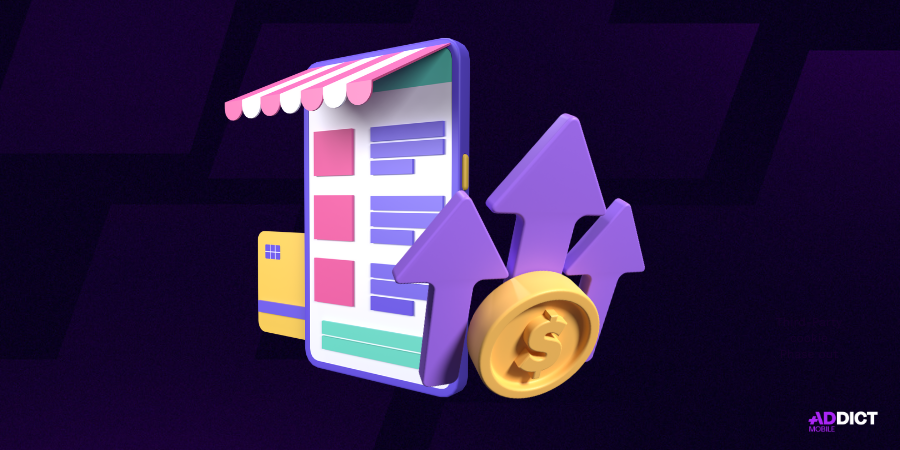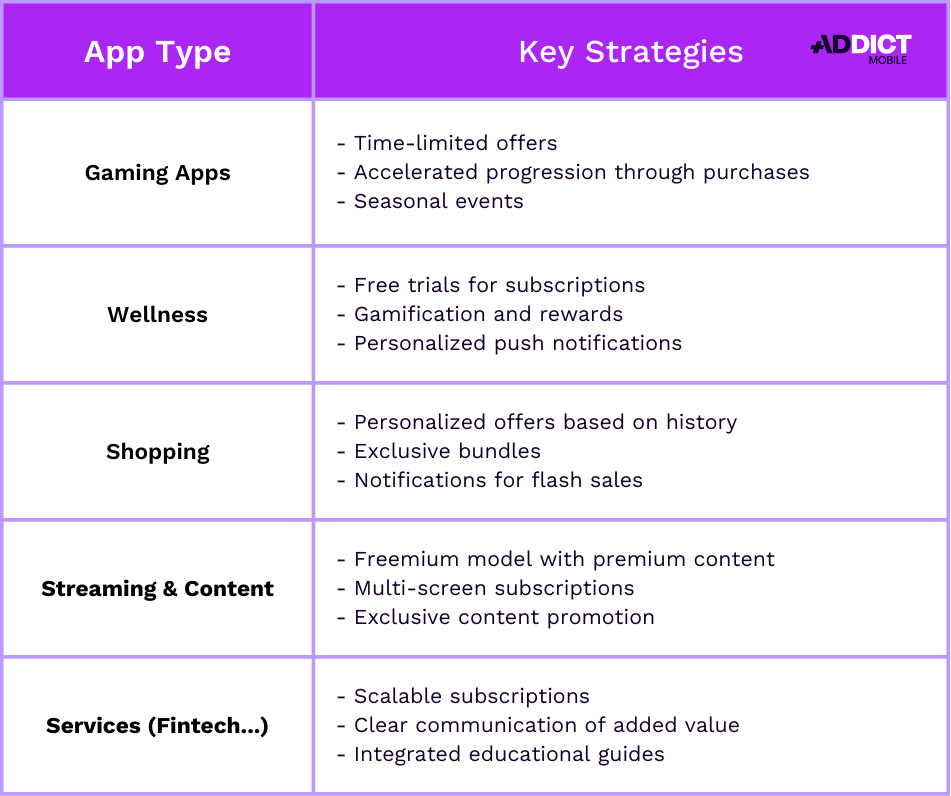In-App Purchases: Strategies and Best Practices to Boost Your Revenue
Introduction
In an ultra-competitive mobile market, generating revenue through in-app purchases (IAP) is a crucial factor for app profitability. However, converting a free user into an active buyer doesn’t happen by chance. It requires a strategic approach tailored to the app type and user behavior.
Whether you are managing a mobile game, a fitness app, a fintech service, or a streaming platform, specific tactics can help maximize conversions and increase long-term user value (LTV). Exclusive offers, targeted notifications, subscription models, and gamification—each vertical has its winning techniques.
This article outlines the best practices to optimize your in-app purchases, providing actionable insights and real-world examples. Ready to boost your monetization? Let’s dive in!

What is in-app purchase?
In-app purchase (IAP) refers to any transaction made directly within a mobile app. These transactions allow users to buy additional features, premium content, subscriptions, or virtual goods. This model is widely used in gaming, service apps (fitness, meditation), and content platforms (streaming services).
There are several types of in-app purchases:
- Consumable Goods: Resources used within the app, such as credits, lives, or power-ups.
- Non-Consumable Goods: Permanent elements like ad removal or access to premium features.
- Subscriptions: Recurring payments for continuous access to services or exclusive content.
How to Measure In-App Purchases?
To analyze IAP performance, specialized mobile measurement tools (MMPs such as Firebase, Adjust or AppsFlyer). These tools track:
- Transaction Volume: Number of purchases made within the app.
- Total Revenue Generated: The overall earnings from in-app purchases.
- User Data: Identifying which user segments spend the most.
Concrete Example:
A mobile game can segment its users into three categories:
- Free Players (no purchases)
- Low Spenders (less than €5 per month)
- High Spenders (Whales) (over €50 per month)
By identifying “whales,” the publisher can offer them personalized deals, such as exclusive bundles. Accurate tracking is essential to measure marketing impact and implement retargeting strategies for increased revenue.
Key KPIs to Track In-App Purchase
To optimize in-app purchase performance, monitoring the following key performance indicators (KPIs) is essential:
- ARPU (Average Revenue Per User): The average revenue generated per user.
- ARPPU (Average Revenue Per Paying User): Revenue generated per paying user.
- Conversion Rate: Percentage of users who made at least one in-app purchase.
- LTV (Lifetime Value): Total value a user generates over their engagement with the app.
- Paying User Retention Rate: Percentage of paying users returning after their first purchase.
Best Practices to Boost In-App PurchasesSeveral strategies can increase IAP revenue:
1. Segmentation and Personalization: Personalization is key to convincing users. Target active users with special promotions or bundles. Analytics tools help create audience segments for tailored offers.
2. Optimizing In-App Messages: Engaging with users through well-placed pop-ups or notifications can effectively encourage purchases at the right moment with special deals.
3. Gamification Strategies: Encouraging users to return frequently increases the likelihood of purchases. Mechanisms like challenges, daily rewards, or progression systems can incentivize users to buy additional resources.
4. Retargeting Campaigns: Identifying users who have already made a purchase and offering them new products or promotions can be a highly effective strategy.
5. Seamless User Experience: A smooth purchase experience is critical. Reducing the number of steps and offering multiple payment options increases conversion rates and overall revenue.
6. A/B Testing Offers: Testing different offers, bundles, creatives, and messaging allows for continuous optimization and significant sales boosts.
7. Expanding Advertising Touchpoints: Testing multiple platforms and adjusting investments based on performance across different channels can help maximize returns. Working with DSPs or other marketing platforms optimizes acquisition campaigns.
Adapting Strategies Based on App Type
Each type of application has users with specific expectations. It is therefore essential to adapt UA campaigns and in-app purchase incentives to the type of app being promoted. Here are a few strategies for each type of application.
- Gaming Apps: Mobile games derive a large part of their revenue from in-app purchases. To boost conversions, focus on time-limited offers, fast-track purchases and seasonal events. For example, a strategy game that introduced a €4.99 starter pack saw its conversion rate rise to 10%.
- Fitness & Wellness apps: These apps often operate on a subscription model. To convert more users, offer free trials, gamify the experience with rewards, and use personalized push notifications. A meditation app offering a 7-day free trial converted 15% of its testers into paying subscribers.
- Retail & Shopping: e-commerce apps should exploit personalized offers based on purchase history, propose exclusive bundles, and send push notifications for flash sales. A marketplace that used an app-exclusive “APP10” promo code increased its orders by 30% in one week.
- Streaming & Content applications: The freemium model is an excellent lever to encourage users to subscribe to a premium offer. Offer multi-screen subscriptions and highlight exclusive content via notifications or in-app banners. With one of our media/streaming customers, Molotov, we were able to increase in-app subscriptions during the World Cup.
- Services apps (Fintech, Healthcare, Productivity): These apps need to offer scalable subscriptions, highlight the added value of premium features, and integrate educational guides to encourage conversion. A budget management app launched a premium banking tracker at €9.99/month, resulting in a 20% increase in paying subscribers in three months.
Summary:


Do not hesitate to contact with our teams
Addict can support you to improve your performance.
Conclusion
In-app purchases represent an essential lever for monetizing applications. By understanding user behavior, using relevant KPIs and optimizing your UA campaigns, you can transform your strategy into a real engine of growth.
Contact us to set up a strategy to boost your revenues!



